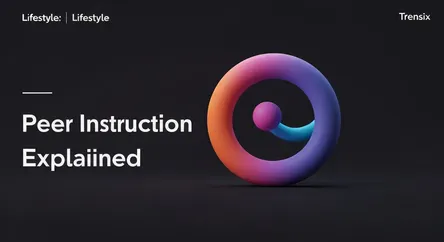Lifestyle
Peer Instruction Explained

Discover Peer Instruction, a teaching method where students learn from each other, boosting engagement, understanding, and critical thinking skills.
What is it?
Peer Instruction is an interactive teaching method that promotes active learning. Developed by Harvard professor Eric Mazur, it flips the traditional classroom model. Students first engage with material outside of class and then spend class time solving problems and discussing concepts with their peers. The core of this method involves the instructor posing a challenging conceptual question. Students first think about it individually and vote on an answer. They then discuss their reasoning with a neighbor who chose a different answer and vote again. This process encourages students to articulate their thoughts and learn from each other's perspectives.
Why is it trending?
Peer Instruction is gaining traction as educators seek more effective alternatives to passive lectures. It directly addresses the need for higher student engagement and has been proven to improve conceptual understanding and problem-solving skills. The rise of flipped classrooms and educational technology, like polling apps and clickers, has made implementing this strategy easier than ever. It provides real-time feedback to both students and instructors, highlighting common misconceptions immediately. Its adaptability across various disciplines, from physics to humanities, makes it a versatile and powerful pedagogical tool in modern education.
How does it affect people?
For students, Peer Instruction transforms learning into a dynamic and social experience. It deepens their understanding by requiring them to verbalize their thought processes and defend their reasoning, which strengthens information retention. This collaborative environment also builds confidence, communication skills, and a sense of community in the classroom. For educators, it offers invaluable insight into how students are processing information, allowing them to identify and address learning gaps instantly. It shifts their role from a simple dispenser of information to a facilitator of deep, meaningful learning.